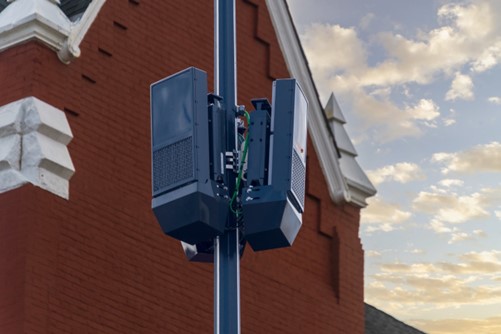Image Credit: Ted Eytan (Flickr)
Competition for Your Internet Business is Keeping Broadband Inflation at a Minimum
Wireless carriers are using the excess capacity on their fifth generation (5G) networks to compete with traditional broadband-internet providers such as cable. Meanwhile, the same cable companies are trying to gain inroads into cell service by promoting new and cheaper cellphone plans.
This competition benefits consumers experiencing high inflation rates in other products they consume by minimizing increases to their internet or cell services. Each of these services has few competitors depending on the region; the additional players, mostly large companies, are welcome by users but may depress earnings.
The consumer-price index (CPI), the most common consumer inflation measure, rose 8.5% from July 2021 to July 2022. The cost of internet service for the same period rose by only 1.7%, according to the Labor Department.
Cell Provider Gains
As 5G is rolled out into communities, cell service providers helped Verizon Communications Inc (VZ) and T-Mobile (TMUS) sign up 2.2 million wireless-internet customers through mid-year 2022. These customers most often then ended their traditional broadband providers’ service. Often these services included add-on subscriptions that were in addition to the broadband connection and added to earnings. The mobile-phone companies’ wireless broadband signals from cell towers to personal routers are fast enough to satisfy most new customers and reduce the need for installation of cables throughout a home or business.
The impact to cable companies can be seen in their earnings. Comcast Corp. (CMCSA) lost residential customers last quarter for the very first time. Charter Communications Inc. (CHTR) had its first decline in nearly a decade. The loss contributed to the cable industry’s worst quarter in years.
Also contributing to the drop, according to cable internet providers, are slower home sales and fewer people moving.
Comcast’s CEO, Brian Roberts, said he expects the pace of internet customers moving to wireless transmission to slow. This is because mobile carriers have capacity constraints that more quickly limit the number of internet users they can add. For instance, T-Mobile says its next-generation network is broad enough to cover 40 million homes and businesses.
“Demand continues to build from dissatisfied suburban cable customers to underserved customers in smaller markets and rural areas,” said T-Mobile CEO Mike Sievert on an earnings conference call last month. T-Mobile said a little more than half of the 560,000 internet customers it added during the second quarter came from cable competitors.
Customer savings, on a percentage basis, can be sizeable. One example shows a customer who lowered their internet bill by moving to a 5G network from $85 to $50, which the new provider locked in for as long as they keep the service.
Broadband Direct Internet Provider Gains
Since before the pandemic, the large cable companies had spent years winning over customers for cellphone service who might have otherwise signed up for service with those more recognized for cell service. Comcast and Charter have gained nearly nine million mobile-phone subscribers since Comcast launched its wireless service in 2017.
Cable companies that now offer cell service aren’t using their own cell networks; they’re paying the wireless providers for access under reseller agreements. The relationships they have, help to sell the service, and it’s boosting their bottom lines – Verizon provides to Comcast and Charter, and T-Mobile sells space to Altice USA.
Ultimate Beneficiary
Internet providers, both wired and wireless, are experiencing competition in their traditional businesses. Both will bump up against capacity constraints as the level of new generation wireless being installed will have a maximum that is not large enough to continue indefinite expansion.
The consumers, for now, are the beneficiaries. For those that have rates that are locked in, they need not be concerned about inflation in their cable costs. However, rates have been known to decline.
Managing Editor, Channelchek
Suggested Content
 Can 5G and Airport Safety Coexist?
|
 Does Your Personality Make You More Likely to be Scammed?
|
 Which Stocks go up When Global Currencies Weaken vs US Dollar?
|
 Entravision Communications Corporation – Virtual Roadshow Replay
|
Sources
https://www.verizon.com/about/investors/quarterly-reports/2q-2022-earnings-conference-call-webcast
Stay up to date. Follow us:

|
